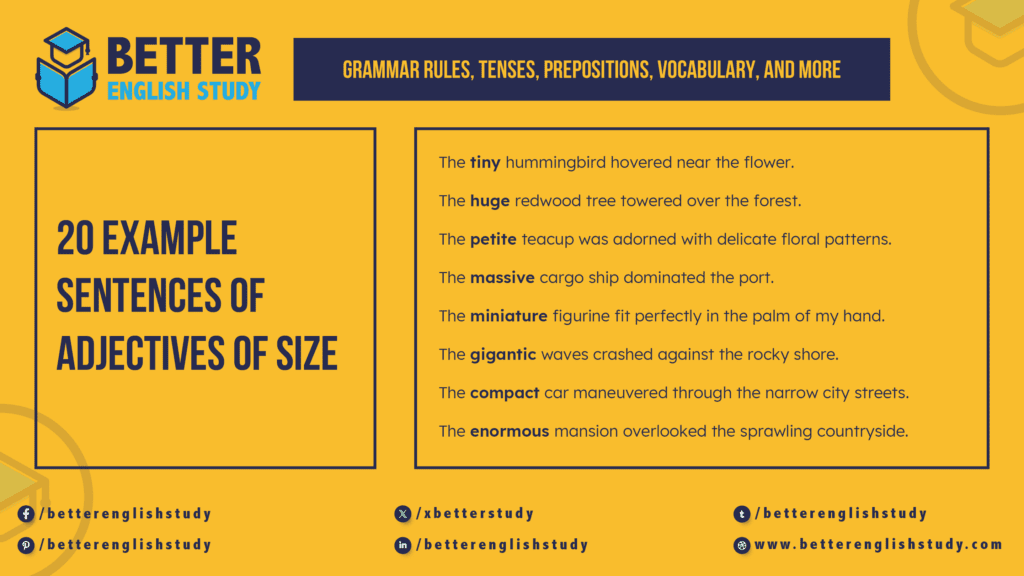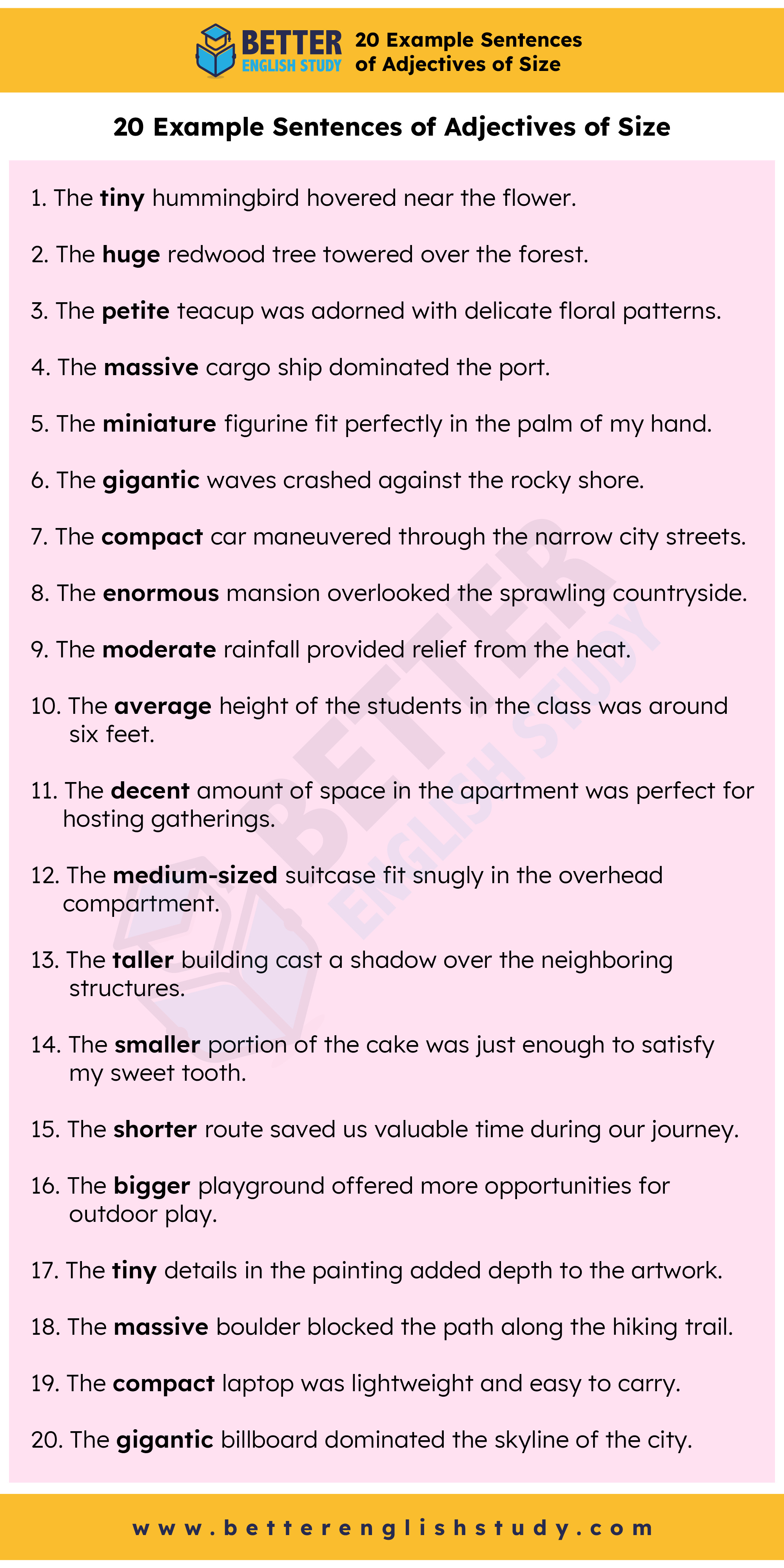
Are you someone who often finds themselves at a loss for words when trying to describe the size of objects or entities? Fear not, for adjectives of size are here to help! Whether you’re marveling at the grandeur of a towering skyscraper or admiring the quaintness of a tiny teacup, understanding and using adjectives of size can add depth and detail to your descriptions. Let’s embark on a journey to explore the world of adjectives that bring size to life.
What are Adjectives of Size?
Adjectives of size are descriptive words used to indicate the dimensions or magnitude of objects, animals, or concepts. They allow us to convey the relative scale of things, from the minuscule to the immense. Let’s delve into some common adjectives of size with examples:
1. Small
These adjectives describe objects that are diminutive or compact in size.
Examples:
- Tiny: A tiny ladybug
- Petite: A petite jewelry box
- Miniature: A miniature bonsai tree
- Compact: A compact smartphone
2. Large
These adjectives describe objects that are significant or expansive in size.
Examples:
- Huge: A huge elephant
- Massive: A massive oak tree
- Gigantic: A gigantic whale
- Enormous: An enormous mountain
3. Medium
These adjectives describe objects that fall between small and large in size.
Examples:
- Moderate: A moderate-sized backpack
- Average: An average-height person
- Decent: A decent-sized bookshelf
- Medium–sized: A medium-sized car
4. Relative
These adjectives describe size in relation to other objects or contexts.
Examples:
- Taller: A taller building than the one next to it
- Smaller: A smaller portion of food compared to the other dish
- Shorter: A shorter route to the destination
- Bigger: A bigger room with more space

How are Adjectives Related to Size?
Adjectives of size play a crucial role in providing specificity and clarity in our descriptions. They help us visualize and understand the scale of objects or concepts, enabling effective communication.
For example, when describing a painting, you might say, “The painting features a tiny boat sailing on a vast ocean, surrounded by towering cliffs.” These adjectives help paint a vivid picture in the reader’s mind, enhancing their understanding and appreciation of the scene.
List of Adjectives of Size
Expand your descriptive repertoire with these adjectives of size:
| Small | Large | Medium | Relative |
| Tiny | Huge | Moderate | Taller |
| Petite | Massive | Average | Smaller |
| Miniature | Gigantic | Decent | Shorter |
| Compact | Enormous | Medium-sized | Bigger |
20 Example Sentences of Adjectives of Size
- The tiny hummingbird hovered near the flower.
- The huge redwood tree towered over the forest.
- The petite teacup was adorned with delicate floral patterns.
- The massive cargo ship dominated the port.
- The miniature figurine fit perfectly in the palm of my hand.
- The gigantic waves crashed against the rocky shore.
- The compact car maneuvered through the narrow city streets.
- The enormous mansion overlooked the sprawling countryside.
- The moderate rainfall provided relief from the heat.
- The average height of the students in the class was around six feet.
- The decent amount of space in the apartment was perfect for hosting gatherings.
- The medium-sized suitcase fit snugly in the overhead compartment.
- The taller building cast a shadow over the neighboring structures.
- The smaller portion of the cake was just enough to satisfy my sweet tooth.
- The shorter route saved us valuable time during our journey.
- The bigger playground offered more opportunities for outdoor play.
- The tiny details in the painting added depth to the artwork.
- The massive boulder blocked the path along the hiking trail.
- The compact laptop was lightweight and easy to carry.
- The gigantic billboard dominated the skyline of the city.
FAQs on Adjectives of Size
Can adjectives of size be subjective?
Yes, adjectives of size can be subjective, as the perception of size may vary depending on individual experiences and perspectives. What one person considers huge, another may perceive as moderate.
How can I improve my use of adjectives of size?
Practice observing and comparing the sizes of objects in different contexts. Pay attention to the relative scale of things and experiment using descriptive words to accurately convey their dimensions.
Are there any rules for using adjectives of size?
While there are no strict rules, it’s essential to use adjectives that accurately convey the size of objects or concepts about their context. Consider the comparison scale and choose adjectives that best describe the relative dimensions.
Adjectives of size are invaluable tools for expressing the dimensions of objects, animals, or concepts in our descriptions. Whether we’re marveling at the grandeur of a towering skyscraper or admiring the quaintness of a tiny teacup, these descriptive words add depth and detail to our language.
So, go ahead, explore the world around you, and let adjectives of size bring dimension to your descriptions.
